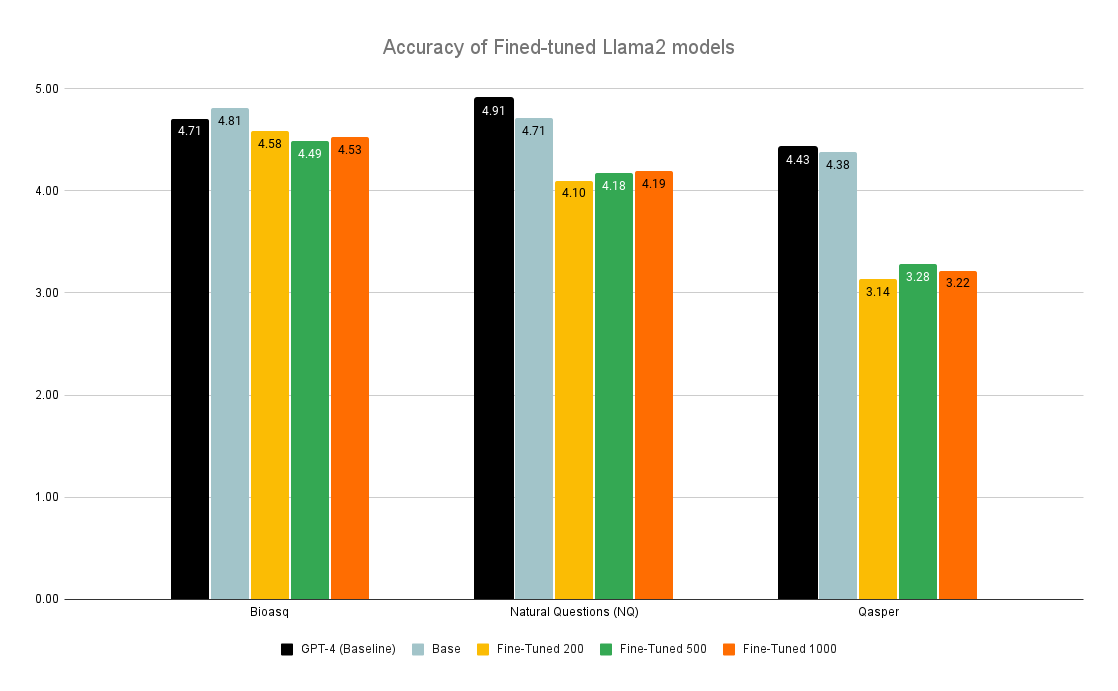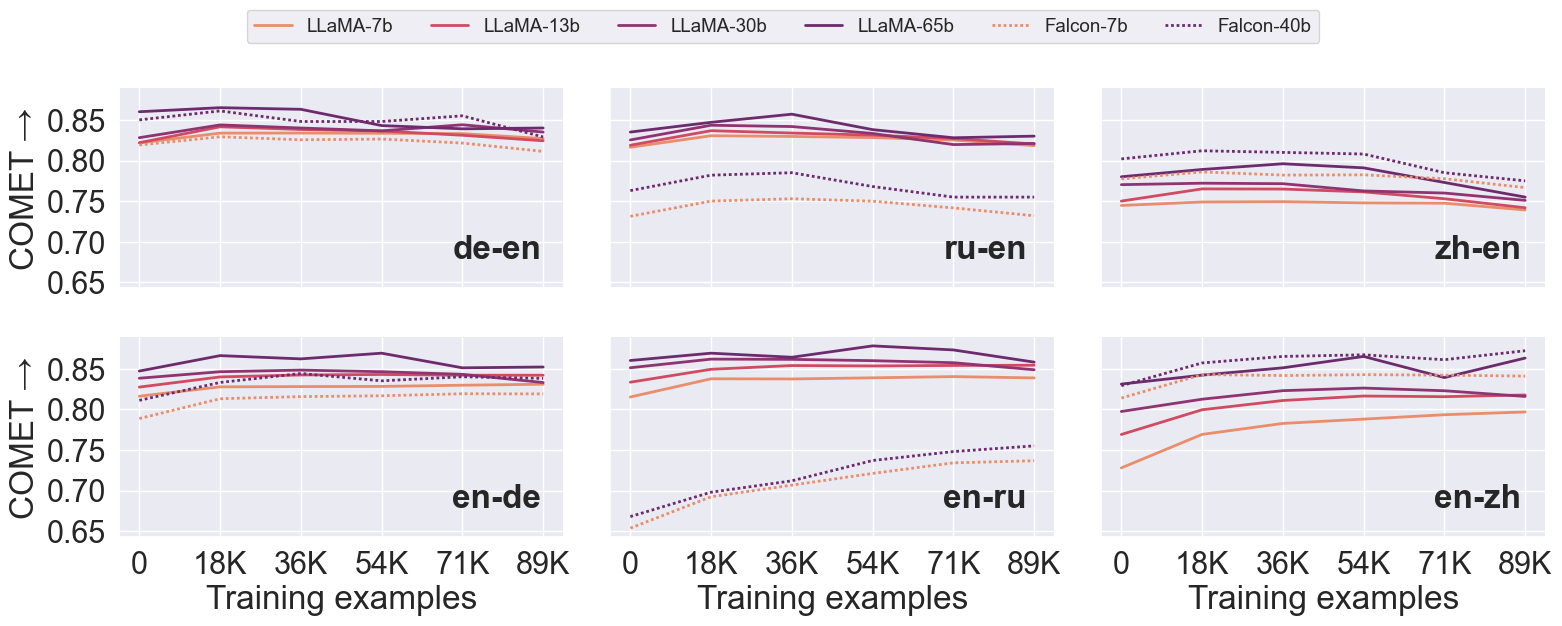I Learn Better If You Speak My Language: Understanding the Superior Performance of Fine-Tuning Large Language Models with LLM-Generated Responses
2402.11192

0
0

Abstract
This paper explores an intriguing observation: fine-tuning a large language model (LLM) with responses generated by a LLM often yields better results than using responses generated by humans. We conduct an in-depth investigation to understand why this occurs. Contrary to the common belief that these instances is simply due to the more detailed nature of LLM-generated content, our study identifies another contributing factor: an LLM is inherently more familiar with LLM generated responses. This familiarity is evidenced by lower perplexity before fine-tuning. We design a series of experiments to understand the impact of the familiarity and our conclusion reveals that this familiarity significantly impacts learning performance. Training with LLM-generated responses not only enhances performance but also helps maintain the model's capabilities in other tasks after fine-tuning on a specific task.
Create account to get full access
Overview
- This paper explores the role of response style in fine-tuning large language models (LLMs) to improve their performance on specific tasks.
- The researchers propose a technique called Style-Aligned Response Adjustment (SARA) that adjusts the output of an LLM to better match the desired response style, such as formality or sentiment.
- The goal is to enhance the LLM's ability to communicate in a way that is more natural and engaging for the user, improving the overall user experience.
Plain English Explanation
Large language models (LLMs) are powerful AI systems that can understand and generate human-like text. However, their responses can sometimes feel robotic or impersonal. The researchers in this paper wanted to find a way to make LLM responses more tailored to the user's preferences and communication style.
They developed a technique called Style-Aligned Response Adjustment (SARA) that can adjust the output of an LLM to better match the desired response style, such as being more formal, casual, or positive in tone. The idea is that if the LLM can communicate in a way that feels more natural and aligned with the user's communication style, it will lead to a better overall user experience.
For example, if a user prefers a more casual and friendly style of communication, the SARA technique could modify the LLM's output to sound less formal and more conversational. This could make the interaction feel more natural and engaging for the user.
The researchers tested their SARA approach on a variety of tasks and found that it can significantly improve the user's perception of the LLM's responses, making them more engaging and helpful.
Technical Explanation
The researchers first identified the importance of response style in fine-tuning LLMs. They argue that the way an LLM communicates, in terms of factors like formality, sentiment, and personality, can have a significant impact on the user's experience and perception of the model's capabilities.
To address this, they developed the Style-Aligned Response Adjustment (SARA) technique, which consists of two main components:
-
Style Encoder: A neural network model that can analyze the style of a given text, such as its level of formality, sentiment, or personality.
-
Style Aligner: A module that can adjust the output of the LLM to better match the desired response style, as determined by the Style Encoder.
The researchers fine-tuned their LLM on various tasks, such as question answering and dialogue, while also training the SARA components. During inference, the SARA module would analyze the LLM's initial response and make targeted adjustments to align it more closely with the desired style.
Through experiments on multiple datasets, the researchers demonstrated that the SARA approach can significantly improve the user's perception of the LLM's responses, making them more engaging, natural, and helpful. They also found that SARA can enhance the LLM's performance on the underlying task, suggesting that the style-aligned responses can better meet the user's needs and preferences.
Critical Analysis
The researchers have presented a compelling approach to enhancing LLM fine-tuning by considering the importance of response style. Their SARA technique is a novel and promising solution to a problem that has significant practical implications for the deployment of LLMs in real-world applications.
However, the paper does not address some potential limitations and areas for further research:
-
Generalizability: The researchers tested SARA on a limited set of tasks and datasets. It would be valuable to explore the technique's performance on a wider range of applications and user demographics to assess its broader applicability.
-
Ethical Considerations: While the paper mentions the potential for SARA to improve user experience, there could be ethical concerns around the model's ability to tailor responses to individual preferences, potentially reinforcing biases or influencing user behavior in unintended ways. Further exploration of these ethical implications would be beneficial.
-
Computational Overhead: The addition of the SARA components may increase the computational complexity and resource requirements of the fine-tuning process. The trade-offs between the performance gains and the computational costs should be carefully evaluated.
-
User Evaluation: The paper relies primarily on automated metrics to assess the SARA technique's effectiveness. Conducting user studies to directly measure the impact on user satisfaction and engagement would provide deeper insights into the real-world implications of this approach.
Despite these potential areas for further research, the SARA technique represents an important step forward in enhancing the user experience and performance of LLMs through a more holistic consideration of response style. The ideas presented in this paper could have significant implications for the development of more natural and engaging language AI systems.
Conclusion
This paper introduces the concept of Style-Aligned Response Adjustment (SARA) as a technique to improve the fine-tuning of large language models (LLMs) by considering the importance of response style. The researchers demonstrate that by adjusting the LLM's output to better match the desired communication style, the user's perception and experience can be significantly enhanced.
The SARA approach, with its style encoder and style aligner components, represents a promising advancement in the field of language AI, with the potential to make LLM interactions more natural, engaging, and tailored to individual user preferences. While further research is needed to address potential limitations and ethical considerations, the ideas presented in this paper could have far-reaching implications for the development of more user-centric and effective language AI systems.
This summary was produced with help from an AI and may contain inaccuracies - check out the links to read the original source documents!
Related Papers

Fine-Tuning or Fine-Failing? Debunking Performance Myths in Large Language Models
Scott Barnett, Zac Brannelly, Stefanus Kurniawan, Sheng Wong

0
0
Large Language Models (LLMs) have the unique capability to understand and generate human-like text from input queries. When fine-tuned, these models show enhanced performance on domain-specific queries. OpenAI highlights the process of fine-tuning, stating: To fine-tune a model, you are required to provide at least 10 examples. We typically see clear improvements from fine-tuning on 50 to 100 training examples, but the right number varies greatly based on the exact use case. This study extends this concept to the integration of LLMs within Retrieval-Augmented Generation (RAG) pipelines, which aim to improve accuracy and relevance by leveraging external corpus data for information retrieval. However, RAG's promise of delivering optimal responses often falls short in complex query scenarios. This study aims to specifically examine the effects of fine-tuning LLMs on their ability to extract and integrate contextual data to enhance the performance of RAG systems across multiple domains. We evaluate the impact of fine-tuning on the LLMs' capacity for data extraction and contextual understanding by comparing the accuracy and completeness of fine-tuned models against baseline performances across datasets from multiple domains. Our findings indicate that fine-tuning resulted in a decline in performance compared to the baseline models, contrary to the improvements observed in standalone LLM applications as suggested by OpenAI. This study highlights the need for vigorous investigation and validation of fine-tuned models for domain-specific tasks.
6/18/2024

How Multilingual Are Large Language Models Fine-Tuned for Translation?
Aquia Richburg, Marine Carpuat

0
0
A new paradigm for machine translation has recently emerged: fine-tuning large language models (LLM) on parallel text has been shown to outperform dedicated translation systems trained in a supervised fashion on much larger amounts of parallel data (Xu et al., 2024a; Alves et al., 2024). However, it remains unclear whether this paradigm can enable massively multilingual machine translation or whether it requires fine-tuning dedicated models for a small number of language pairs. How does translation fine-tuning impact the MT capabilities of LLMs for zero-shot languages, zero-shot language pairs, and translation tasks that do not involve English? To address these questions, we conduct an extensive empirical evaluation of the translation quality of the TOWER family of language models (Alves et al., 2024) on 132 translation tasks from the multi-parallel FLORES-200 data. We find that translation fine-tuning improves translation quality even for zero-shot languages on average, but that the impact is uneven depending on the language pairs involved. These results call for further research to effectively enable massively multilingual translation with LLMs.
6/3/2024
💬
Eliciting the Translation Ability of Large Language Models via Multilingual Finetuning with Translation Instructions
Jiahuan Li, Hao Zhou, Shujian Huang, Shanbo Cheng, Jiajun Chen

0
0
Large-scale Pretrained Language Models (LLMs), such as ChatGPT and GPT4, have shown strong abilities in multilingual translations, without being explicitly trained on parallel corpora. It is interesting how the LLMs obtain their ability to carry out translation instructions for different languages. In this paper, we present a detailed analysis by finetuning a multilingual pretrained language model, XGLM-7B, to perform multilingual translation following given instructions. Firstly, we show that multilingual LLMs have stronger translation abilities than previously demonstrated. For a certain language, the performance depends on its similarity to English and the amount of data used in the pretraining phase. Secondly, we find that LLMs' ability to carry out translation instructions relies on the understanding of translation instructions and the alignment among different languages. With multilingual finetuning, LLMs could learn to perform the translation task well even for those language pairs unseen during the instruction tuning phase.
4/16/2024

The Fine-Tuning Paradox: Boosting Translation Quality Without Sacrificing LLM Abilities
David Stap, Eva Hasler, Bill Byrne, Christof Monz, Ke Tran

0
0
Fine-tuning large language models (LLMs) for machine translation has shown improvements in overall translation quality. However, it is unclear what is the impact of fine-tuning on desirable LLM behaviors that are not present in neural machine translation models, such as steerability, inherent document-level translation abilities, and the ability to produce less literal translations. We perform an extensive translation evaluation on the LLaMA and Falcon family of models with model size ranging from 7 billion up to 65 billion parameters. Our results show that while fine-tuning improves the general translation quality of LLMs, several abilities degrade. In particular, we observe a decline in the ability to perform formality steering, to produce technical translations through few-shot examples, and to perform document-level translation. On the other hand, we observe that the model produces less literal translations after fine-tuning on parallel data. We show that by including monolingual data as part of the fine-tuning data we can maintain the abilities while simultaneously enhancing overall translation quality. Our findings emphasize the need for fine-tuning strategies that preserve the benefits of LLMs for machine translation.
5/31/2024